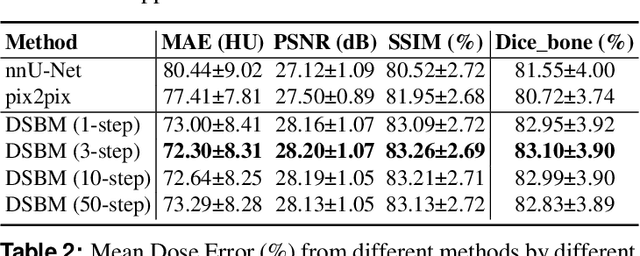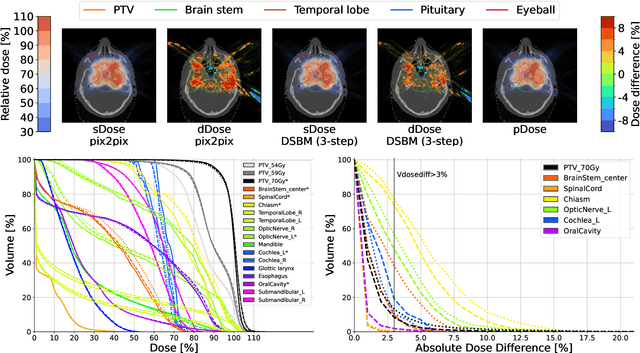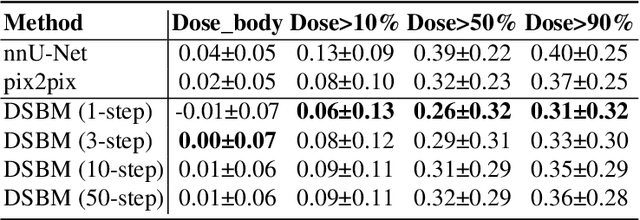Damien Weber
Diffusion Schrödinger Bridge Models for High-Quality MR-to-CT Synthesis for Head and Neck Proton Treatment Planning
Apr 17, 2024



Abstract:In recent advancements in proton therapy, MR-based treatment planning is gaining momentum to minimize additional radiation exposure compared to traditional CT-based methods. This transition highlights the critical need for accurate MR-to-CT image synthesis, which is essential for precise proton dose calculations. Our research introduces the Diffusion Schr\"odinger Bridge Models (DSBM), an innovative approach for high-quality MR-to-CT synthesis. DSBM learns the nonlinear diffusion processes between MR and CT data distributions. This method improves upon traditional diffusion models by initiating synthesis from the prior distribution rather than the Gaussian distribution, enhancing both generation quality and efficiency. We validated the effectiveness of DSBM on a head and neck cancer dataset, demonstrating its superiority over traditional image synthesis methods through both image-level and dosimetric-level evaluations. The effectiveness of DSBM in MR-based proton treatment planning highlights its potential as a valuable tool in various clinical scenarios.
Neural Graphics Primitives-based Deformable Image Registration for On-the-fly Motion Extraction
Feb 08, 2024Abstract:Intra-fraction motion in radiotherapy is commonly modeled using deformable image registration (DIR). However, existing methods often struggle to balance speed and accuracy, limiting their applicability in clinical scenarios. This study introduces a novel approach that harnesses Neural Graphics Primitives (NGP) to optimize the displacement vector field (DVF). Our method leverages learned primitives, processed as splats, and interpolates within space using a shallow neural network. Uniquely, it enables self-supervised optimization at an ultra-fast speed, negating the need for pre-training on extensive datasets and allowing seamless adaptation to new cases. We validated this approach on the 4D-CT lung dataset DIR-lab, achieving a target registration error (TRE) of 1.15\pm1.15 mm within a remarkable time of 1.77 seconds. Notably, our method also addresses the sliding boundary problem, a common challenge in conventional DIR methods.
 Add to Chrome
Add to Chrome Add to Firefox
Add to Firefox Add to Edge
Add to Edge